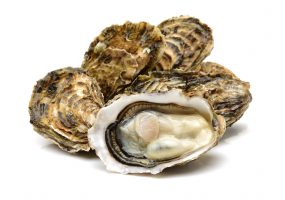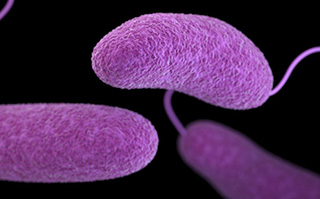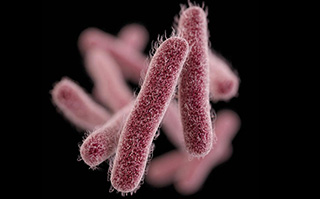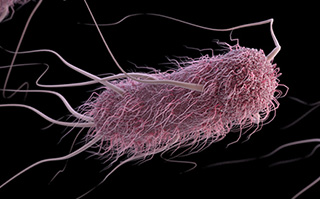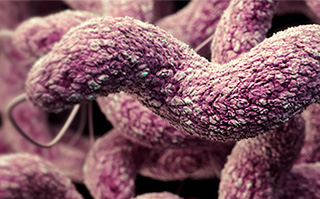Multistate Outbreak of Gastrointestinal Illnesses Linked to Oysters Imported from Mexico
Final Update

Published June 21, 2019 at 3:00 PM ET
This outbreak appears to be over. Consumers, restaurants, and retailers should always handle and cook oysters properly. Get CDC’s tips for preventing foodborne illness from oysters and other shellfish.
CDC and public health and regulatory officials in several states investigated a multistate outbreak of gastrointestinal illnesses linked to raw oysters harvested from Estero El Cardon estuary in Baja California Sur, Mexico.

- Reported Cases: 16
- States: 5
- Hospitalizations: 2
- Deaths: 0
- Recall: Yes
- CDC recommends that consumers, restaurants, and retailers always handle and cook oysters and other shellfish safely to help prevent foodborne illness.
- Do not eat raw or undercooked oysters or other shellfish. Cook them thoroughly before eating.
- Raw oysters and shellfish that contain harmful bacteria or viruses may look, smell, and taste normal.
Handling and Cooking Tips
- Handling oysters:
- Before cooking, throw out any oysters with open shells.
- Keep cooked and raw oysters separate.
- Use hot, soapy water or a bleach solution to wash items that come into contact with raw oysters and their juices, including countertops, utensils, dishes, and cutting boards.
- Always wash your hands with soap and water after handling raw oysters and shellfish.
- Cooking oysters:
- When cooking oysters in the shell
- Boil until the shells open and continue boiling another 3-5 minutes, or
- Add to a steamer when water is already steaming, and cook for another 4-9 minutes.
- Only eat oysters that open during cooking. Throw out any oysters that do not open fully after cooking.
- For shucked oysters
- Boil for at least 3 minutes,
- Fry in oil for at least 3 minutes at 375°F,
- Broil 3 inches from heat for 3 minutes, or
- Bake at 450°F for 10 minutes.
- When cooking oysters in the shell
- Restaurants and retailers should:
- Clean refrigerators, cutting boards, countertops, and utensils that come into contact with raw oysters or their juice. Then, sanitize the surfaces with a solution of one tablespoon of chlorine bleach to one gallon of hot water and dry with a clean cloth or paper towel.
- Clean and sanitize display cases, surfaces, and any reusable containers used to store, serve, or prepare raw oysters or their juice.
- Wash hands with soap and water after cleaning and sanitizing.

- As of June 21, 2019, this outbreak appears to be over.
- Sixteen ill people were reported from five states.
- Illnesses started on dates ranging from December 16, 2018, through April 17, 2019.
- Two people were hospitalized. No deaths were reported.
- Laboratory testing on samples from patients identified multiple pathogens causing infections. Some people were infected with more than one pathogen.
- Case counts by pathogen or illness:
- Four cases of Shigella flexneri infection
- Two cases of Vibrio parahaemolyticus infection
- One case of Vibrio parahaemolyticus and Shiga toxin-producing Escherichia coli (STEC) non-O157 coinfection
- One case of Vibrio parahaemolyticus and Shigella flexneri coinfection
- One case of Shigella flexneri and Campylobacter lari coinfection
- One case of Vibrio albensis infection
- One case of norovirus genogroup 1 infection
- One case of infection with Vibrio of unknown species
- Four cases of illness without a pathogen identified
- Epidemiologic and traceback evidence indicated that raw oysters harvested from Estero El Cardon in Baja California Sur, Mexico, were the likely source of this outbreak.
- On May 6, 2019, one U.S. distributor of oysters harvested from Estero El Cardon issued a voluntary recall.
- At the request of Mexico’s public health authorities, all raw oysters distributed from Estero El Cardon from the last week of April 2019 through the first week of May 2019 were recalled [PDF – 474 KB].
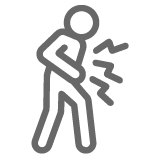
Protect Yourself

Shigella spreads easily from one person to another. Find out how you can help keep yourself and your loved ones from getting sick. Get tips >
The pathogens involved in this outbreak (Vibrio, Shigella, norovirus, STEC, and Campylobacter) share some common symptoms of illness:
- Diarrhea (that may be watery or bloody)
- Stomach cramps or pain
- Nausea
- Vomiting
- Fever
Symptoms typically start from 1 to 4 days after the pathogen is swallowed and last from 1 day to 1 week. Most people recover without treatment.
Call the doctor if you have:
- Diarrhea and a fever higher than 102°F
- Diarrhea for more than 3 days that is not improving
- Bloody stools (poop)
- Prolonged vomiting that prevents you from keeping liquids down
- Signs of dehydration, such as:
- Making very little urine
- Dry mouth and throat
- Dizziness when standing up
June 21, 2019
CDC and public health and regulatory officials in several states investigated a multistate outbreak of gastrointestinal illnesses linked to raw oysters harvested from Estero El Cardon estuary in Baja California Sur, Mexico.
As of June 21, 2019, 16 ill people had been reported from five states. Ill people in this outbreak were infected with multiple pathogens causing illness, including Vibrio parahaemolyticus, Shigella flexneri, STEC non-O157, Vibrio albensis, Campylobacter lari, and norovirus genogroup 1.
Illnesses started on dates ranging from December 16, 2018, through April 17, 2019. Among 15 people with information available, ages ranged from 26 to 80 years, with a median age of 38. Sixty percent were male. Among 15 people with information available, 2 (13%) were hospitalized.
A list of the states that reported people linked to the outbreak and the number of cases in each state can be found on the Map of Reported Cases page.
Whole genome sequencing analysis of one Campylobacter lari isolate and five Vibrio parahaemolyticus isolates from ill people predicted resistance to ampicillin. Ampicillin is not a recommended antibiotic for Campylobacter lari or Vibrio parahaemolyticus infections. Analysis of five Shigella flexneri isolates from ill people predicted resistance to ampicillin, chloramphenicol, streptomycin, and tetracycline. These findings are unlikely to affect treatment because other antibiotics are more commonly used until resistance results are available. No resistance was predicted for one STEC isolate from an ill person. Antibiotics are not typically recommended for patients with STEC infections.
Investigation of the Outbreak
CDC, public health and regulatory officials in several states, and the U.S. Food and Drug Administration (FDA) investigated illnesses linked to raw oysters harvested from Estero El Cardon estuary in Baja California Sur, Mexico. This multistate investigation began on March 29, 2019, when the PulseNet system identified a cluster of closely related Vibrio parahaemolyticus bacteria in samples isolated from ill people.
Epidemiologic and traceback evidence indicated that raw oysters harvested from Estero El Cardon in Baja California Sur, Mexico, were the likely source of this outbreak. State public health officials identified additional illnesses among people who also ate raw oysters from the same harvest area. FDA investigated a subset of illnesses investigated by the CDC.
In interviews, ill people answered questions about the foods they ate and other exposures in the week before they became ill. All 15 people who were interviewed reported eating raw oysters from different restaurants in California and Nevada. State health officials collected traceback information for 15 cases and found that oysters were shipped by Sol Azul, S.A. de C.V. (MX 01 SS) and harvested from Estero El Cardon, and were distributed to California, Nevada, New York, and Arizona. It is possible that additional states received these oysters either directly from Mexico or through further distribution within the United States. Oysters were sold to wholesale distributors with direct sales to restaurants. The oysters were not sold to grocery stores.
On May 6, 2019, one U.S. distributor of oysters harvested from Estero El Cardon issued a voluntary recall [PDF – 197 KB]. On May 7, 2019, Estero El Cardon was closed [PDF – 491 KB] to further oyster harvesting pending additional investigation. At the request of Mexico’s public health authorities, all remaining raw oysters in commercial distribution from Estero El Cardon from the last week of April 2019 through the first week of May 2019 were recalled [PDF – 474 KB]. On June 13, 2019, Estero El Cardon was reopened [PDF – 465 KB].
As of June 21, 2019, this outbreak appears to be over.
